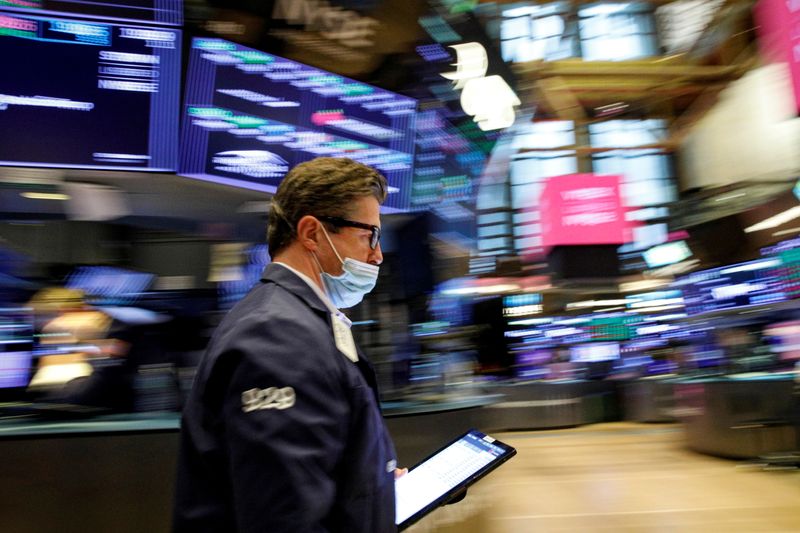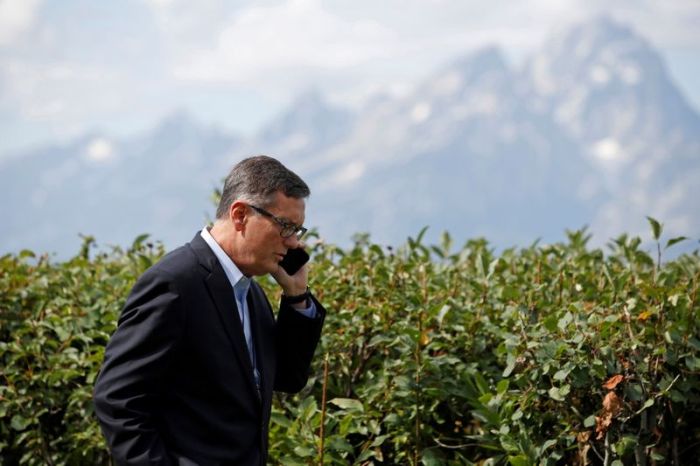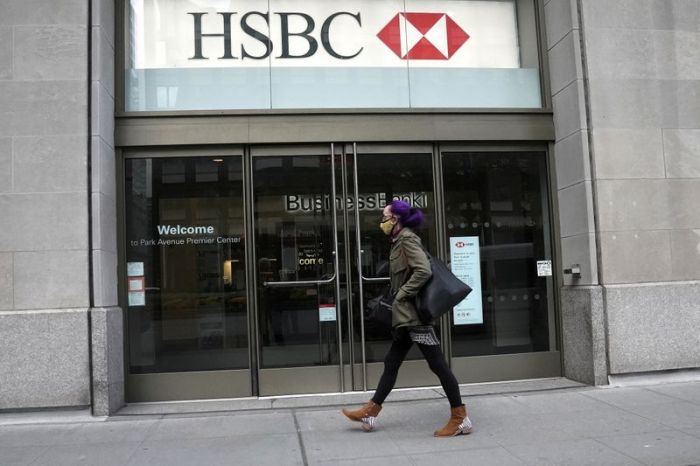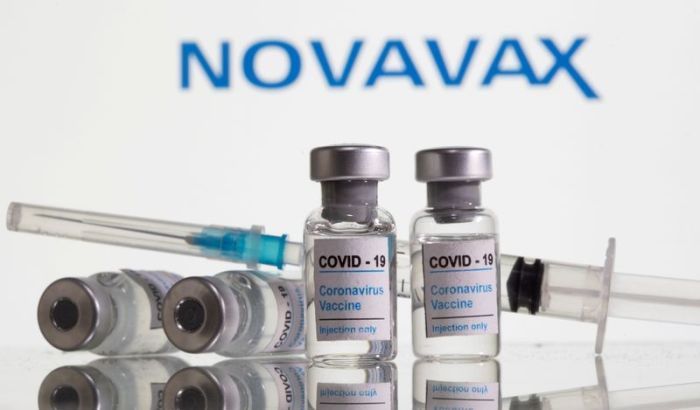BOSTON (Reuters) -Stocks, Treasuries and other major markets were mixed on Wednesday after July data showed that U.S. jobs growth slowed but demand for services increased, all as Federal Reserve officials signaled a likely pullback in market support.
After powering to a record high on Tuesday from strong earnings, the S&P 500 lost 20.46 points, or 0.46%, to close Wednesday at 4,402.69, and the Dow Jones Industrial Average fell 323.34 points, or 0.92%, to 34,793.06.
At the same time, the Nasdaq Composite added 19.24 points, or 0.13%, to 14,780.53, with big technology stocks such as Netflix Inc, Amazon.com Inc and Facebook Inc outperforming.
U.S. private payrolls increased far less than expected in July, likely constrained by shortages of workers and raw materials. Employers added 330,000 jobs last month, the ADP National Employment Report showed on Wednesday, compared with an increase of 695,000 forecast by economists polled by Reuters.
“The market is surprisingly resilient given the weak ADP numbers and a bond market apparently signaling slower growth ahead,” said Nancy Tengler, chief investment officer of Nashville-based asset manager Laffer Tengler Investments.
Tengler pointed to the positive growth indicators from manufacturing inventories and demand for services, but cited concern over COVID-19 in China and related economic slowdowns.
The Institute for Supply Management said on Wednesday its non-manufacturing activity index hit 64.1 last month from 60.1 in June, the highest reading in its history.
Strong corporate profits have recently eased concerns over the coronavirus pandemic. Nearly 90% of the 377 S&P 500 Index companies that have reported earnings for the second quarter have come in above analyst expectations, the highest on record since 1994, according to Refinitiv data.
But investors are also weighing inflationary pressures and a growing belief that the Federal Reserve may soon trim support for the economy.
Federal Reserve Vice Chair Richard Clarida said on Wednesday that the U.S. economy is on track to meet the employment and inflation hurdles that the Federal Reserve has set for raising interest rates in 2023, echoing comments by other officials.
Traders sent U.S. Treasury yields slightly higher, apparently shifting their focus away from the disappointing payroll report.
Ten-year notes last rose 1/32 in price to yield 1.1721%. They previously touched 1.127%, their lowest since February.
Investors are still waiting for the latest U.S. non-farm payroll numbers on Friday – the last before Federal Reserve leaders convene in Jackson Hole, Wyoming, to discuss policy and decide future stimulus strategy.
“While the economic recovery has been exceptional by historical standards on account of massive fiscal and monetary policy, peak accommodation is likely behind us, and as a result, peak growth may be as well,” BofA Global Research strategists wrote in a new report.
“Fiscal policy in the U.S. is likely to fall short of expectations and the exogenous risk of the Delta variant remains,” the report added.
Oil prices fell for a third day in a row to a two-week low on Wednesday on a surprise build in U.S. crude stockpiles, the negative U.S. economic report and worries that the spread of the coronavirus Delta variant will weigh on global energy demand.
U.S. crude recently fell 3.73% to $67.93 per barrel and Brent was at $70.16, down 3.11% on the day.
The dollar recovered from a fall on Wednesday brought on by the jobs data. After a steady day, the dollar index against major currencies fell as much as 0.2% before turning back up. The dollar index was up around 0.26% as of late afternoon.
Spot gold added 0.1% to $1,811.90 an ounce. U.S. gold futures fell 0.03% to $1,809.60 an ounce.
(Reporting by Lawrence Delevingne; Editing by Dan Grebler, Will Dunham and Alexander Smith)

























